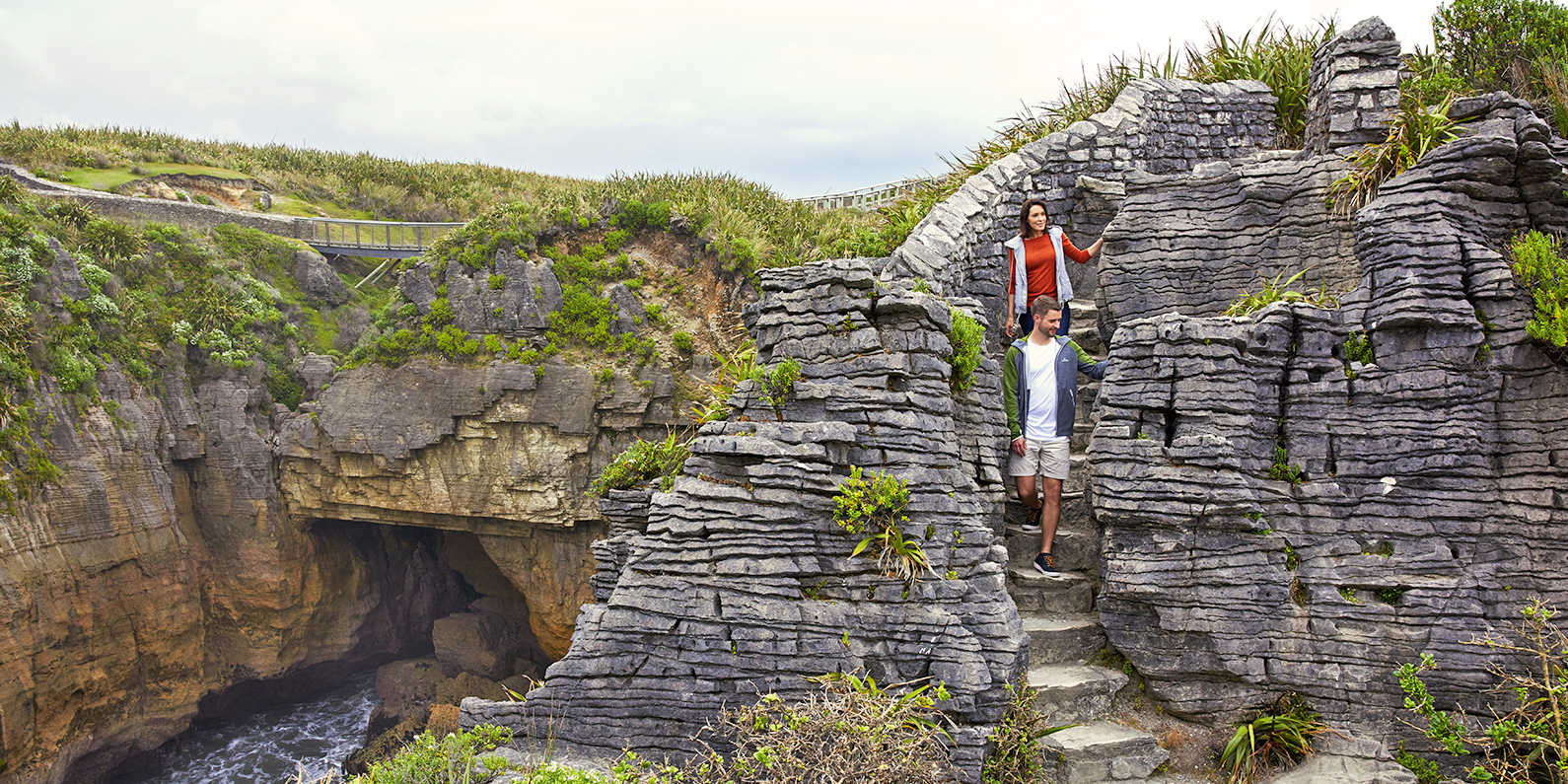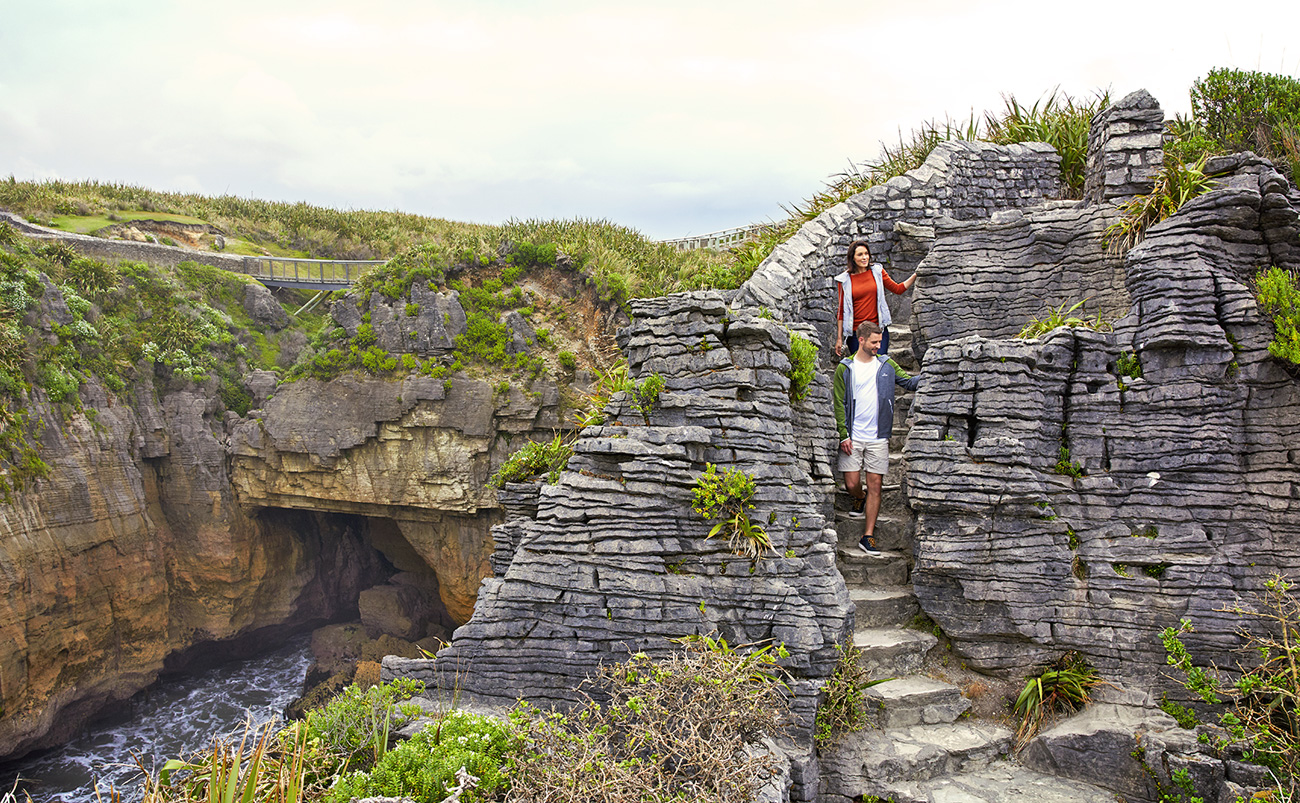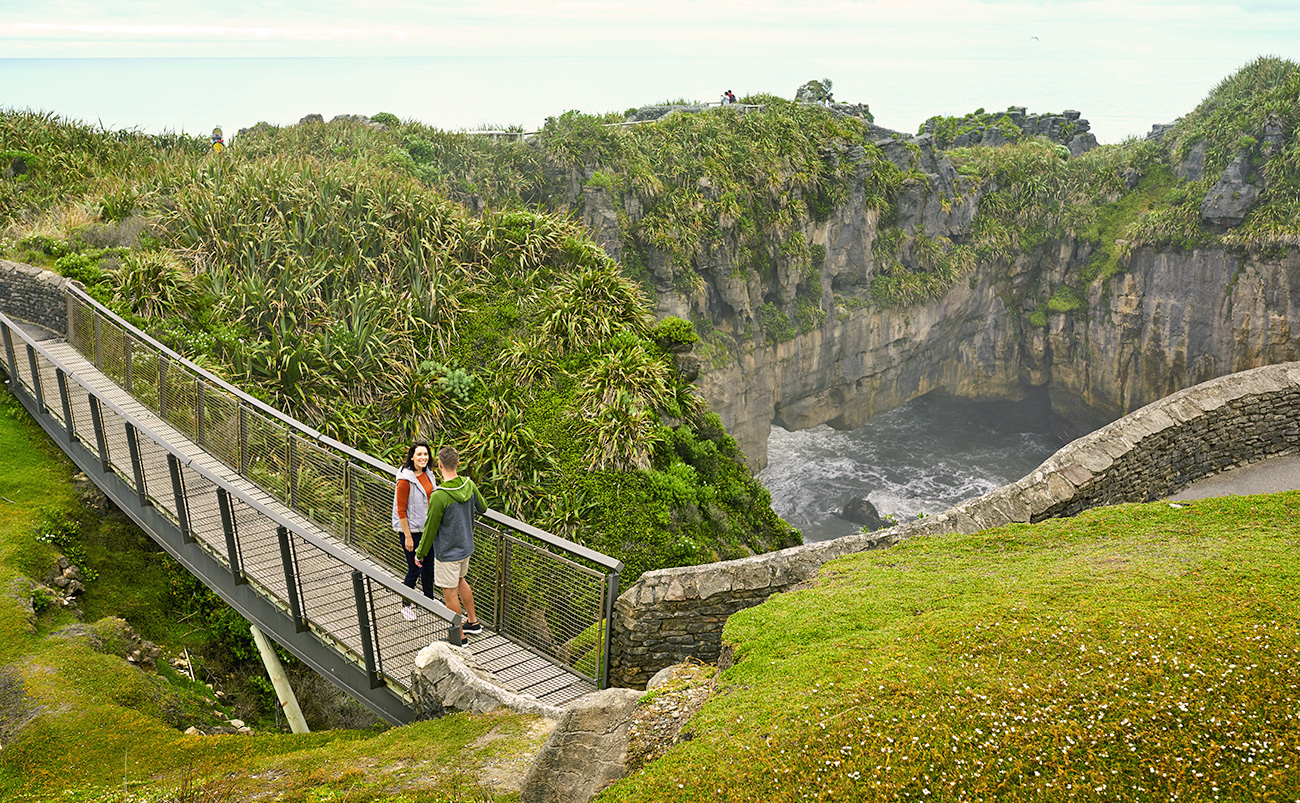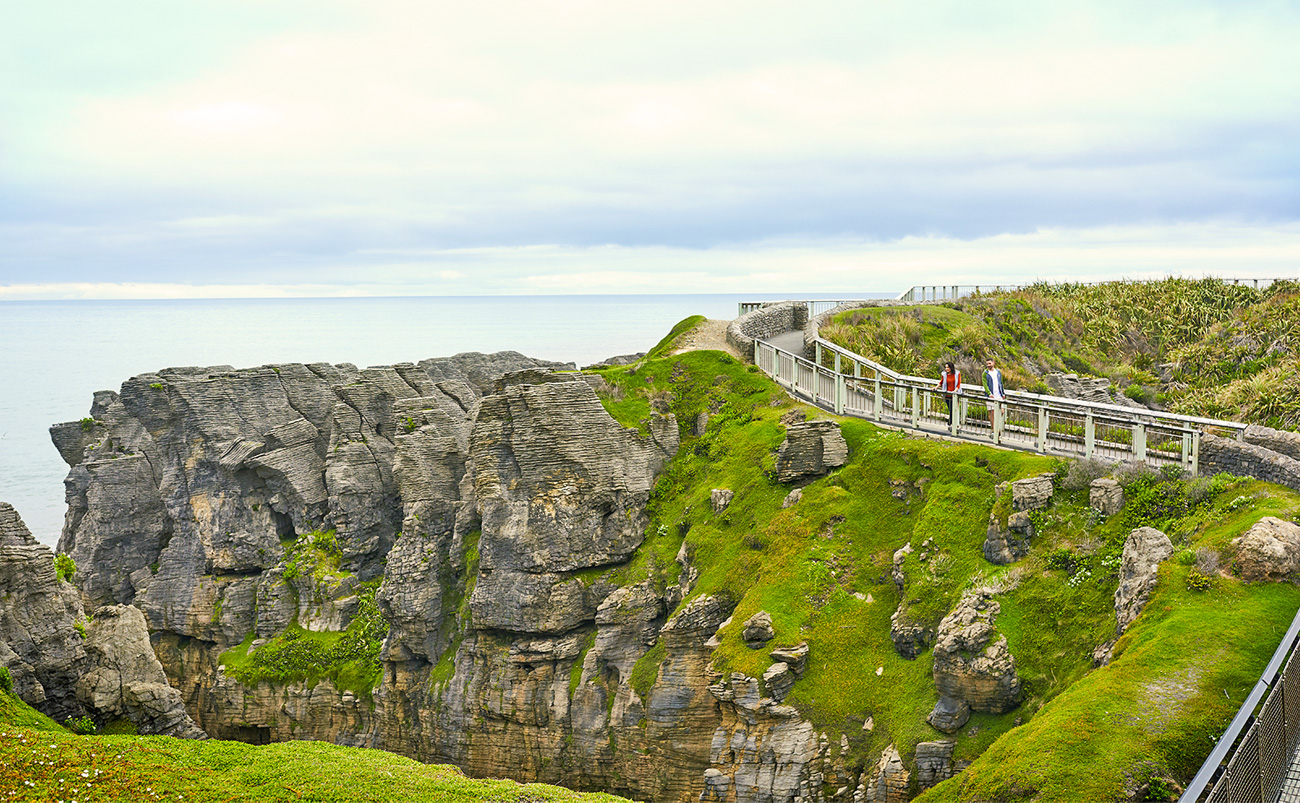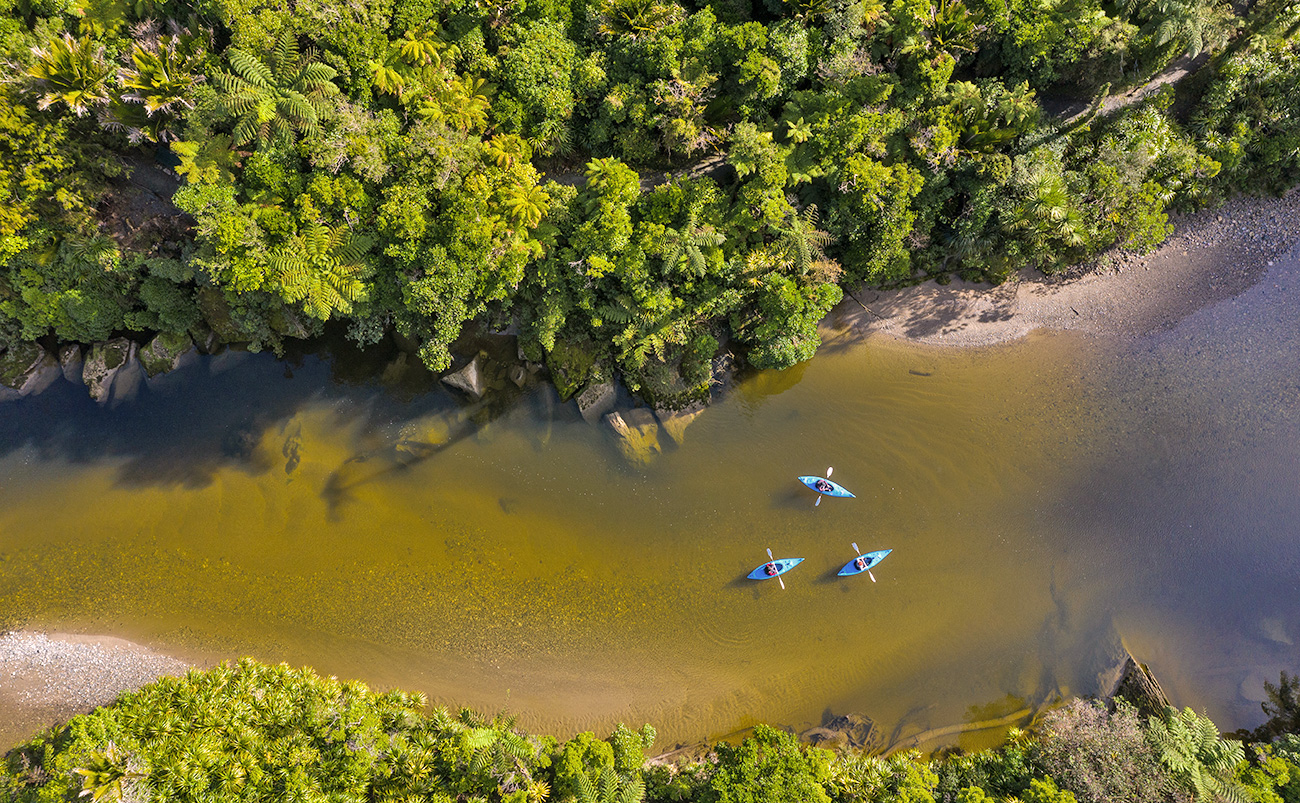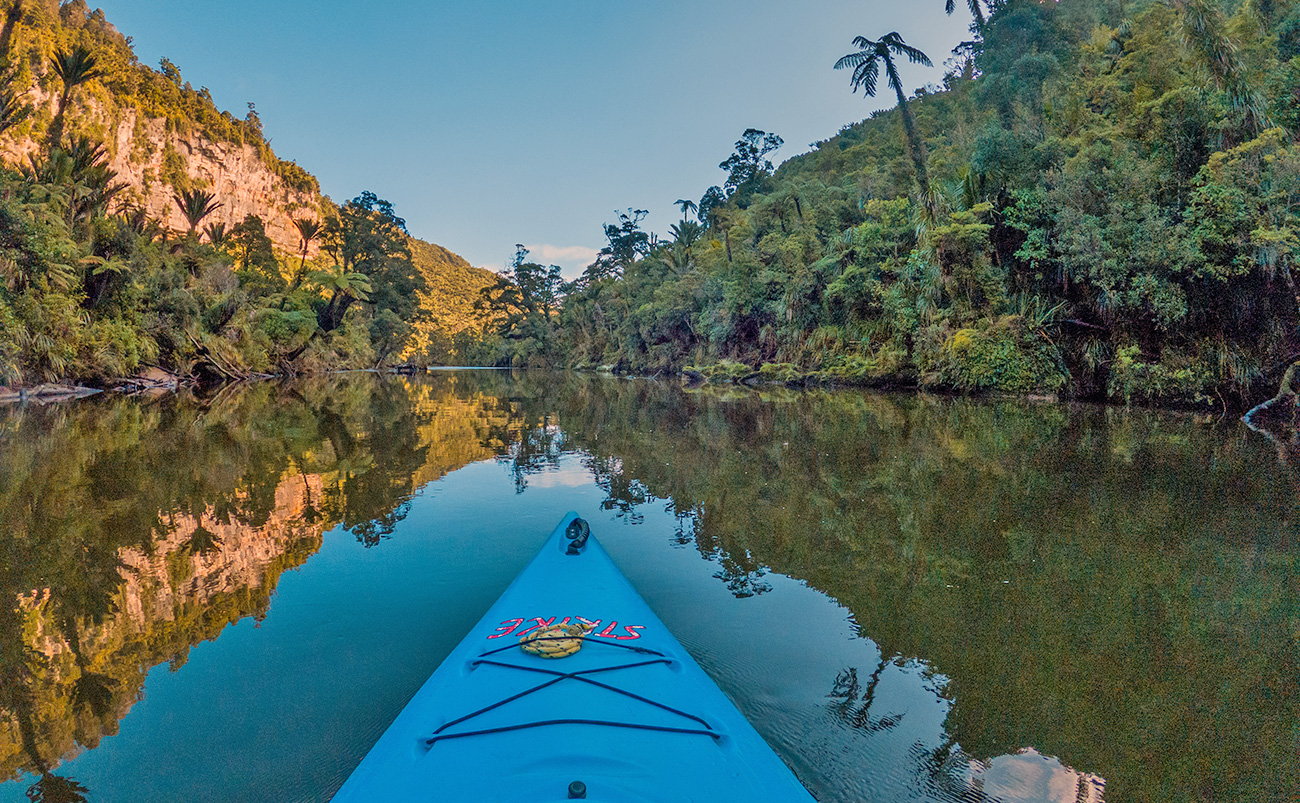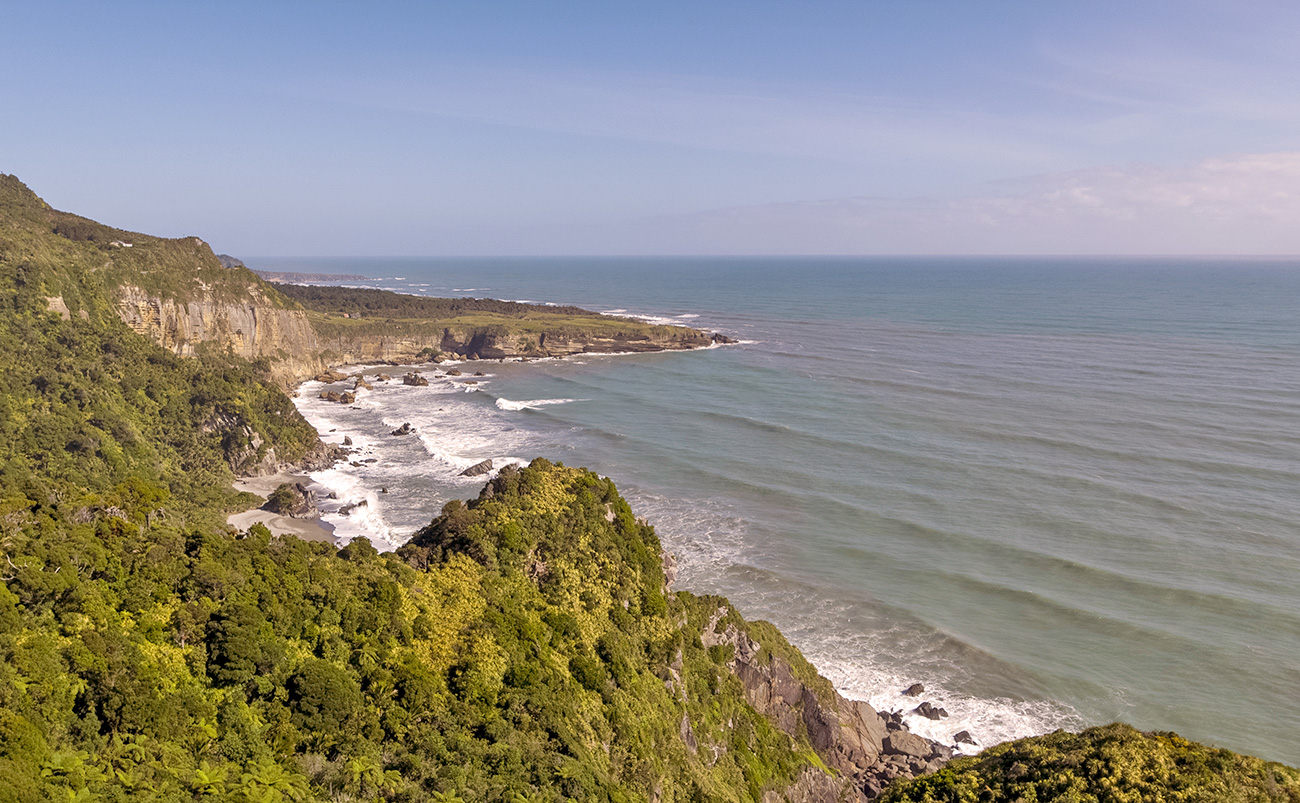By following the historic Inland Pack Track, formed originally by gold miners, visitors can discover some of the park’s most special places. Camping under a natural rock shelter – the Ballroom Overhang – is an unforgettable experience.
Table of Contents
Highlights
Limestone underlies most of the park, and is responsible for the area’s impressive landforms. Sculptured mountain ridges, mysterious river canyons, delicate cave decorations and the bizarre, pancake-like coastal formations will keep your camera busy. Maori travellers knew Punakaiki as a place for feasting (Punakaiki means ‘a spring of food’).
The park is the overlapping point between subtropical and cool climate trees. Nikau palms, northern rata and cabbage trees give the lowland rainforest a lush, Pacific feeling. Further up, silver beech forest merges with sub alpine shrubs. Higher still, daisies and gentians provide colour among the alpine tussocks. Some plants are unique to the area, suggesting that it was a botanic refuge during the ice ages. Birdlife is prolific in the Paparoa National Park. The endemic Westland Black Petrel breeds only on the Punakaiki coast, and the Great Spotted Kiwi combs the forest by night.
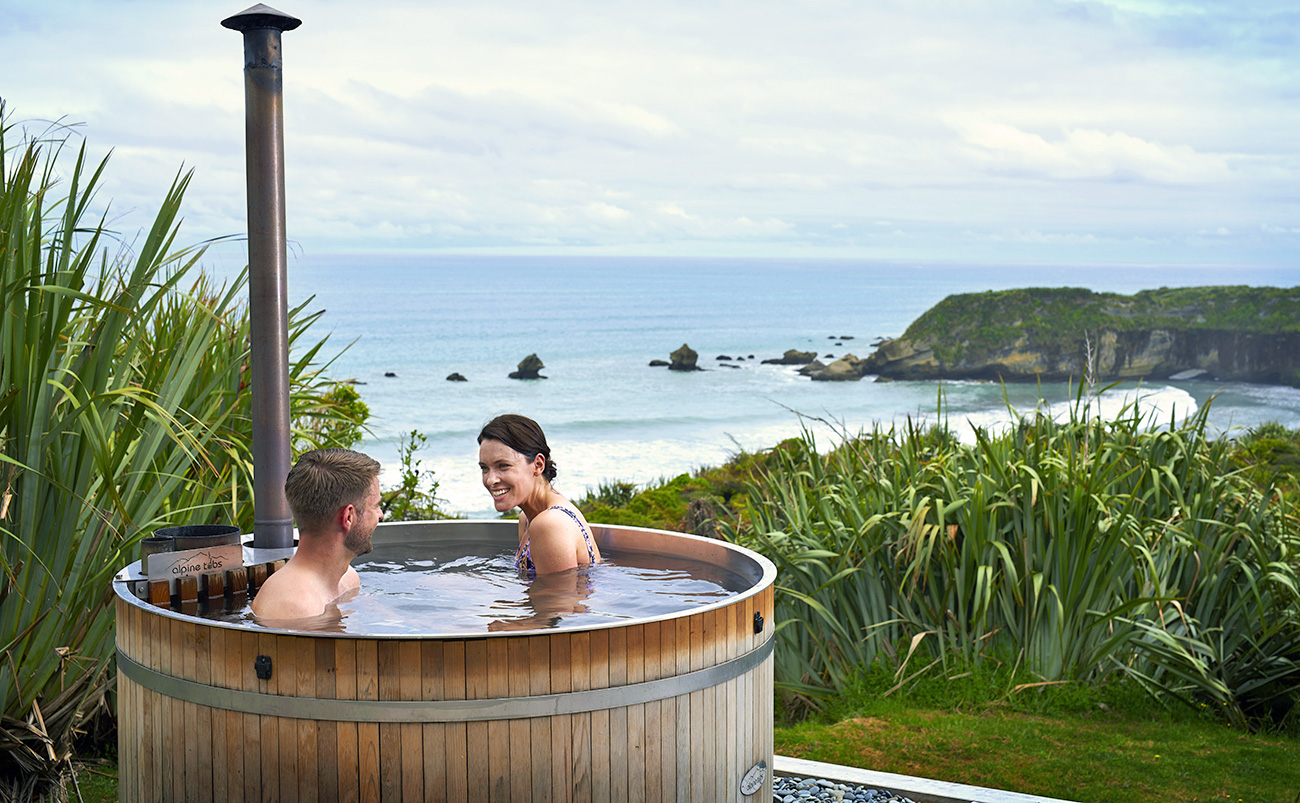
Where to Stay
In the National Park
The seaside village of Punakaiki offers a choice of accommodation styles – from bed and breakfast to luxury seaview villas. Several of our tours stay at Punakaiki Rocks Hotel & Resort. There are no Department of Conservation hikers’ huts in the park. Hikers walking the Inland Pack Track can park their tents at the Ballroom Overhang campsite.
Around the Park
The historic towns of Westport to the north and Greymouth to the south are within easy driving distance of the park. Both provide a full range of accommodation.
Things to Do
Blowholes, Rocks and Caves
The short track to the blowholes at Punakaiki is one of New Zealand’s most travelled trails, with good reason. When high tides coincide with westerly swells, seawater geysers shoot for the sky. Behind Punakaiki there are accessible limestone caves – you’ll need a torch. Local caving companies can help you to explore the deeper cave systems in the park, including the five kilometre Xanadu cave.
Wilderness Paddling
Kayaking on the Pororari River is a peaceful way to soak up the ambience of the park. Highlights include a dramatic limestone gorge and bird spotting in the rainforest.
Walking Tracks
The park’s shorter walks include the Truman Track (30 minutes return) and the Pororari River Track (3 hours return) and the Fox River Caves Track (3 hours return). You’ll need a tent to complete the two-day Inland Pack Track – there’s a campsite, but no huts.
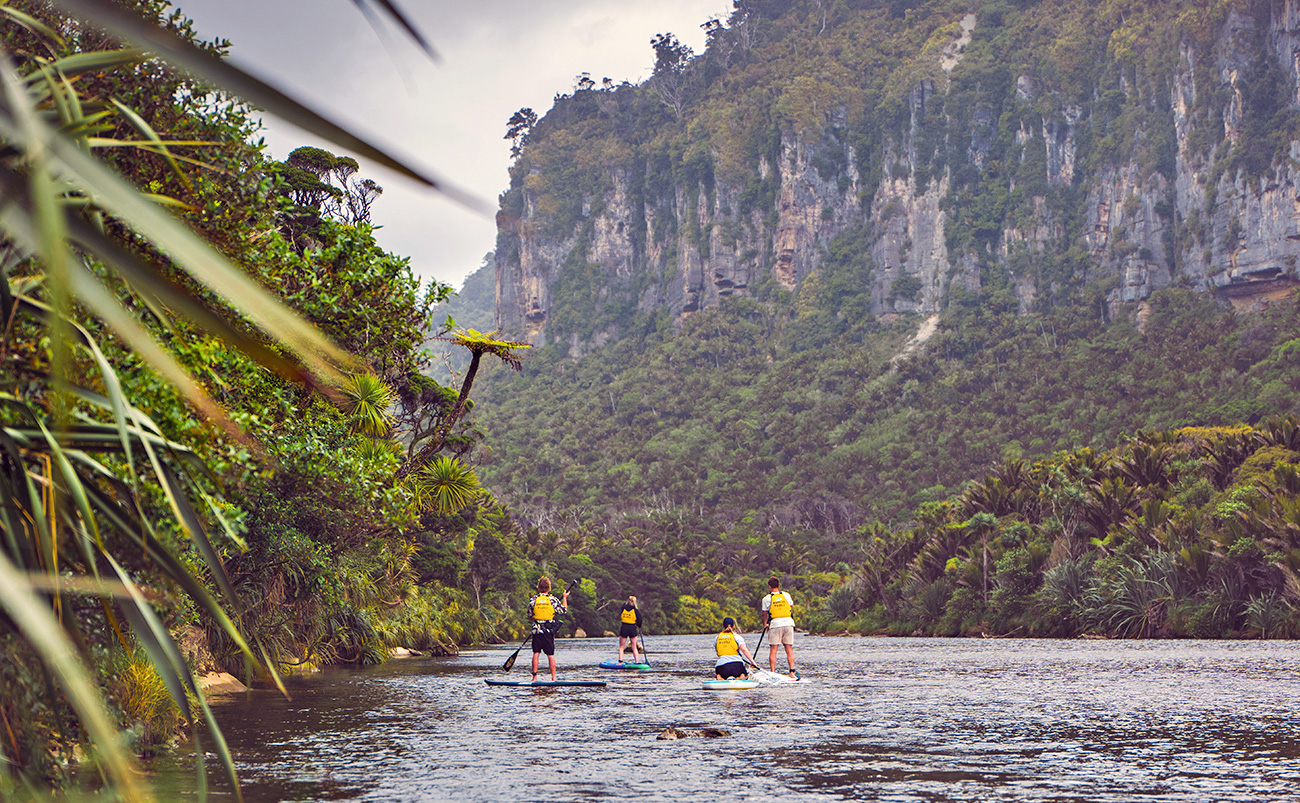
Best Time to Visit
Summer (Dec-Feb)
The Inland Pack Track is seeing plenty of action, as visitors make the most of the warm weather. Hot hikers can cool off in a river, or head down to the beach for a body-surfing session.
Autumn (Mar-May)
A great time for hiking – short walks and long. It’s getting a little cool for swimming, but kayaking trips on the Porarari River are very rewarding. A sunset horse trek along the beach is a memorable experience.
Winter (Jun-Aug)
It’s cooler, but the weather is drier. Equipped with the right gear, you can walk the Inland Pack Track and overnight at the Ballroom Overhang. Every evening, the petrels gather at the beach before flying to their nesting grounds.
Spring (Sep-Nov)
Definitely the wettest time of the year. There are no bridges on the walks, so you’ll need to take extra care crossing rivers. The fledgling petrels are honing their flying skills – once they leave, they won’t be back for several years.
